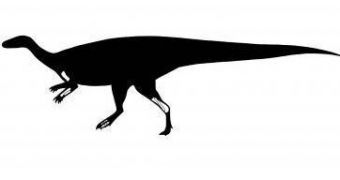In 1971, while prospecting for thorium in the northern regions of British Columbia, geologist Kenny Larsen discovered the fossils of a dinosaur. Since thorium is a radioactive element, Larsen was equipped with instruments capable of measuring the levels of radiation in the surrounding medium. Thus, he detected a radiation peak that seemed to be coming from the bones. The bones he found remained in his possession until 2004, when they were donated to the Dalhousie University.
Now, a new study suggests that the fossils discovered by Larsen could have belonged to a species of dinosaur previously unknown to researchers. At the time when the bones were sent to the Dalhousie University, most paleontologists believed that they could have come from a small-medium sized dinosaur, probably a pachycephalosaur or ornithopod. However, the analysis made by then-undergraduate student Victoria Arbour on the specimen, referred to as the Sustut dinosaur, indicated that they might have come from a previously unknown species.
The problem is that, because the exact location of the place where the bones were found is unknown, dating the fossils is extremely difficult. Nevertheless, some rock fragments still remained attached to them, thus revealing that the specimen could have lived about 70 million years ago in what is known as the Upper Cretaceous Period.
The shape and size of the bones seem to resemble those of small two-legged, plant-eating dinosaurs, some of them closely matching those of pachycephalosaurs, while others are similar to those of ornithopods.
"There are similarities with two other kinds of dinosaurs although there's also an arm bone we've never seen before. The Sustut dinosaur may be a new species, but we won't know for sure until more fossils can be found," Arbour said. Due to these particular features, the fossils could just as well belong to more than one individual, probably from different species.

 14 DAY TRIAL //
14 DAY TRIAL //